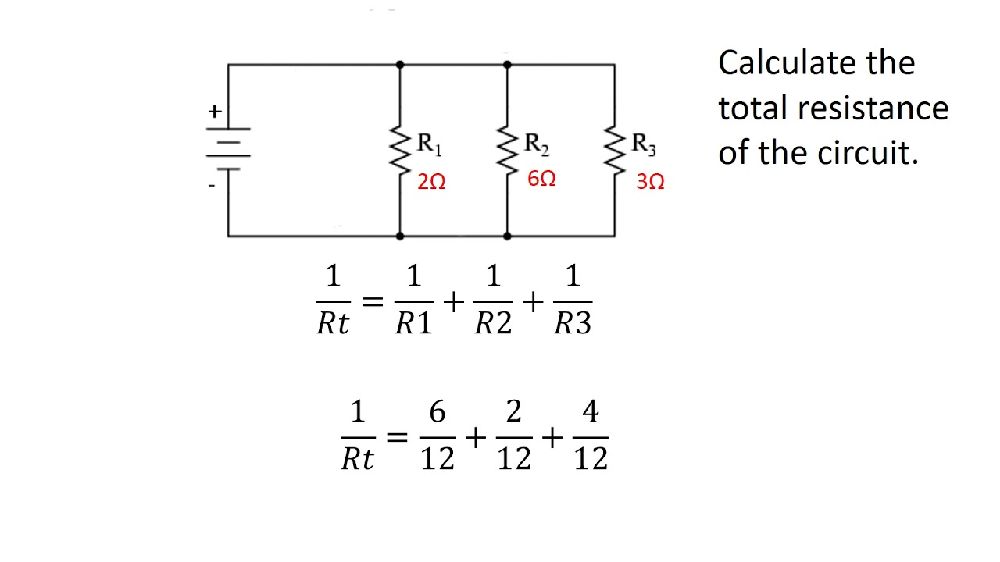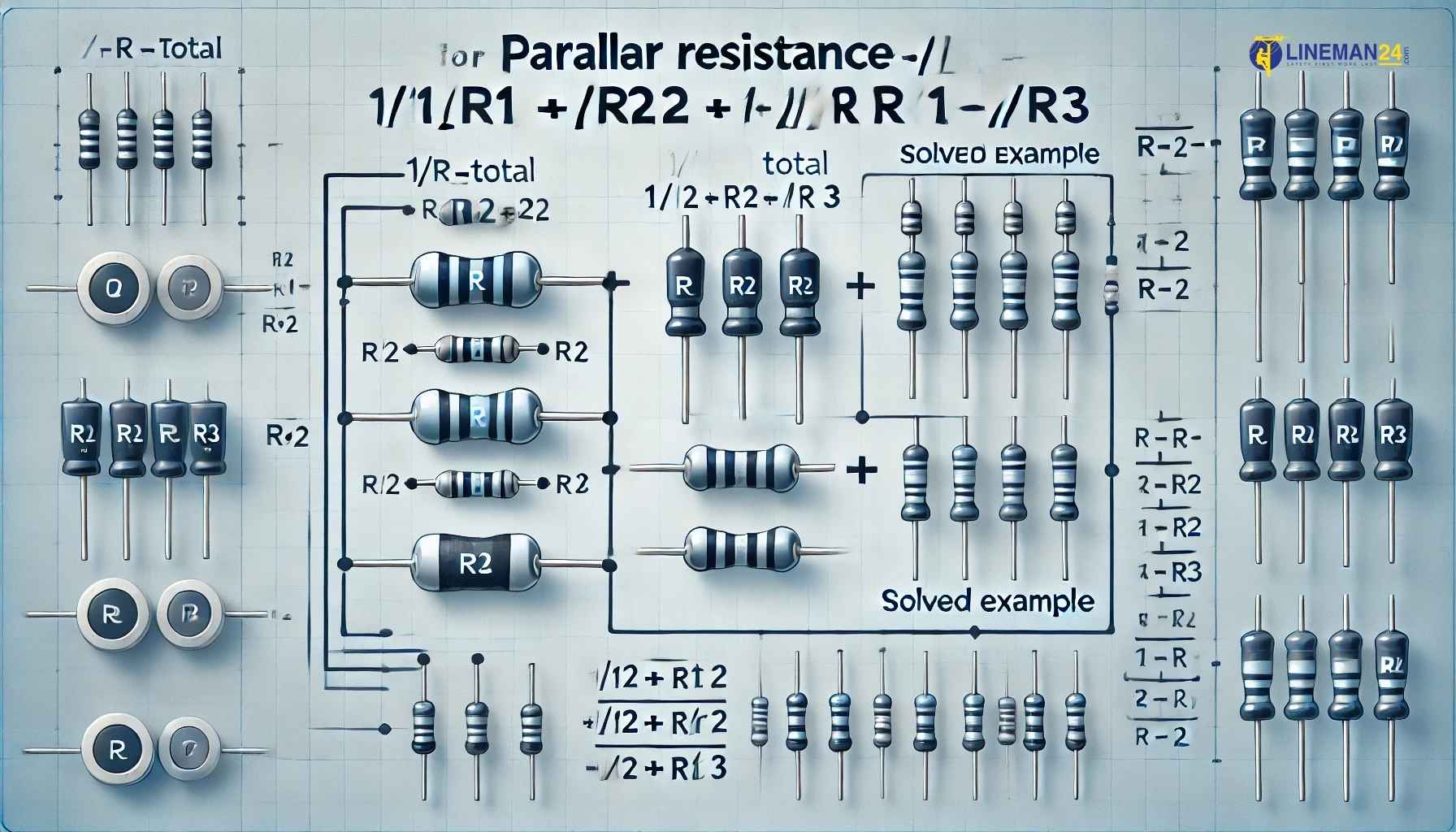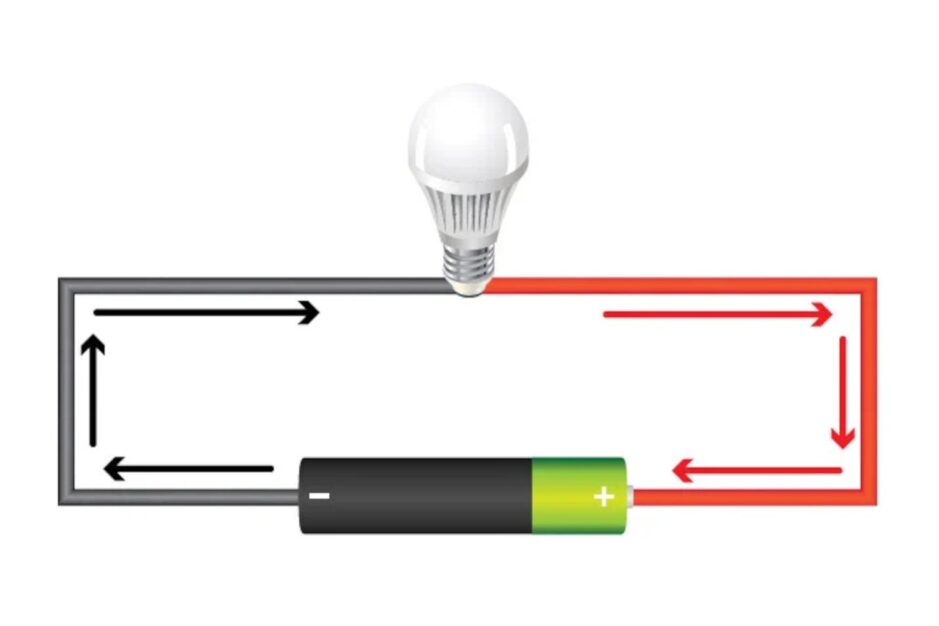To calculate resistors in parallel, use the formula 1/R_total = 1/R1 + 1/R2 + 1/R3. This gives the total resistance.
Resistors in parallel circuits often find usage in electronic devices for efficient current distribution. Understanding how to calculate the total resistance in a parallel configuration ensures optimal performance and prevents circuit damage. The formula 1/R_total = 1/R1 + 1/R2 + 1/R3 simplifies the process, making it accessible even for beginners.
Each resistor added in parallel reduces the overall resistance, allowing more current to flow through the circuit. This principle is vital for designing circuits that require precise resistance values. By mastering this calculation, you can enhance your electronic projects and ensure they operate correctly.
Introduction To Parallel Resistors
Resistors in parallel are a common topic in electronics. They are crucial in many circuits. Understanding them helps in designing efficient systems. This section will cover the basics and their importance.
Basics Of Parallel Circuits
Parallel circuits have multiple paths for current flow. Each resistor in parallel has the same voltage across it. The total resistance is always less than the smallest resistor.
Use the formula for calculating total resistance:
1/Rtotal = 1/R1 + 1/R2 + 1/R3 + ...For example, if you have three resistors:
- R1 = 4Ω
- R2 = 6Ω
- R3 = 12Ω
Calculate like this:
1/Rtotal = 1/4 + 1/6 + 1/12Find a common denominator, add fractions, then invert the sum:
1/Rtotal = 3/12 + 2/12 + 1/12 = 6/12 = 1/2Importance In Electrical Systems
Parallel resistors are vital in circuits. They help regulate current. They allow for different components to operate independently. If one resistor fails, the circuit still works. This increases reliability.
Consider a table of common applications:
| Application | Purpose |
|---|---|
| Voltage Regulation | Maintains stable voltage levels |
| Current Sharing | Distributes current evenly |
| Load Balancing | Prevents overloading components |
Understanding parallel resistors improves circuit design. It leads to more efficient and reliable systems.
Key Formulas
Understanding resistor calculation in parallel circuits is crucial. The correct formulas ensure accurate results. Let’s break down the key formulas you need.
Ohm’s Law
Ohm’s Law is the foundation for electrical calculations. This law states:
V = I R
Where:
- V is voltage (volts)
- I is current (amperes)
- R is resistance (ohms)
Use this formula to find the missing value. For example, if you know the current and resistance, you can find the voltage.
Parallel Resistor Formula
Calculating resistance in parallel circuits uses a special formula. It differs from series circuits. The formula is:
1/R_total = 1/R1 + 1/R2 + ... + 1/Rn
Here, R_total is the total resistance. R1, R2, … Rn are the individual resistances.
For example, if you have two resistors, R1 = 4 ohms and R2 = 6 ohms:
1/R_total = 1/4 + 1/6
Calculate each term:
- 1/4 = 0.25
- 1/6 ≈ 0.167
Add them up:
0.25 + 0.167 ≈ 0.417
Then, take the reciprocal:
R_total ≈ 1 / 0.417 ≈ 2.4 ohms
This formula works for any number of resistors in parallel.
Using these key formulas simplifies resistor calculations. Always double-check your work to ensure accuracy.
Calculating Total Resistance
Calculating the total resistance in a parallel circuit is essential. It helps in understanding how the circuit behaves. In a parallel circuit, the total resistance is always less than the smallest resistor. This is because the current has multiple paths to flow.
Step-by-step Method
- List all the resistors in the circuit.
- Use the formula for parallel resistance:
1/Rtotal = 1/R1 + 1/R2 + ... + 1/Rn. - Calculate the reciprocal of each resistor.
- Add up all the reciprocals.
- Take the reciprocal of the sum to find the total resistance.
Example Calculations
Let’s look at an example with three resistors: R1 = 4Ω, R2 = 6Ω, and R3 = 12Ω.
| Resistor | Value (Ω) |
|---|---|
| R1 | 4 |
| R2 | 6 |
| R3 | 12 |
Follow these steps:
- Calculate the reciprocals:
1/R1 = 1/4 = 0.251/R2 = 1/6 ≈ 0.16671/R3 = 1/12 ≈ 0.0833
- Add the reciprocals:
0.25 + 0.1667 + 0.0833 ≈ 0.50
- Take the reciprocal of the sum:
1/0.50 = 2Ω
The total resistance for the given resistors is 2Ω.

Credit: www.electronics-tutorials.ws
Common Mistakes
Calculating resistors in parallel can be tricky. Many beginners make common mistakes. These mistakes can lead to inaccurate results. Let’s explore the common pitfalls.
Misinterpreting Formulas
One frequent error is using the wrong formula. The formula for parallel resistors is:
1/R_total = 1/R1 + 1/R2 + 1/R3 + ... + 1/Rn
Many people mistakenly sum the resistances directly. This is incorrect and will give wrong values. Always remember to use the reciprocal formula.
Here’s a simple example to illustrate:
| Resistor | Value (Ohms) |
|---|---|
| R1 | 10 |
| R2 | 20 |
| R_total | 6.67 |
Using the formula:
1/R_total = 1/10 + 1/20
R_total is 6.67 Ohms. Summing directly gives 30 Ohms, which is wrong.
Ignoring Units
Another mistake is ignoring units. Always ensure consistency in units. Mixing units leads to errors.
For instance, using kilo-ohms (kΩ) and ohms (Ω) together without converting:
- R1 = 1 kΩ
- R2 = 500 Ω
Convert 1 kΩ to 1000 Ω:
1/R_total = 1/1000 + 1/500
This gives the correct result. Ignoring units can double or halve your final value.
Always check and convert units before calculations. This practice avoids confusion and mistakes.
Practical Applications
Understanding resistor calculation in parallel circuits is essential. It helps in various practical applications. This knowledge is crucial in household electronics and industrial machines. Let’s explore these applications in detail.
Household Electronics
Resistors in parallel are common in household electronics. They help in distributing the current evenly across components. This ensures the safe operation of devices.
- Televisions: Parallel resistors help regulate voltage in circuits.
- Computers: They ensure stable power supply to different parts.
- LED Lighting: Resistors control the current flow to LEDs.
These examples show how crucial parallel resistors are in everyday devices. Proper calculation ensures long-lasting and efficient electronics.
Industrial Machines
Industrial machines also rely heavily on parallel resistors. They ensure the machinery operates safely and efficiently.
- Motors: Parallel resistors help in controlling motor speeds.
- Temperature Controls: They regulate temperature in heating systems.
- Robotics: Resistors manage power distribution in robotic arms.
These applications highlight the importance of correct resistor calculation. It ensures the smooth operation of industrial machinery.
Understanding resistor calculation in parallel circuits is vital. It impacts both household electronics and industrial machines. Accurate calculations lead to better performance and safety.
Tools And Software
Resistor calculation in parallel circuits can be complex. Luckily, various tools and software simplify the process. These tools provide accurate results and save time. Let’s explore the most popular options.
Online Calculators
Online calculators are user-friendly and accessible from any device. They require basic input like resistor values. The calculator then gives you the total resistance.
- Ease of Use: Just input resistor values.
- Instant Results: Get accurate results in seconds.
- No Downloads: Accessible via any web browser.
Here are some popular online calculators:
| Website | Features |
|---|---|
| AllAboutCircuits | Simple input fields, detailed results |
| Electronics2000 | Supports multiple resistors, quick calculations |
Circuit Simulation Software
Circuit simulation software offers more than just calculations. They provide a visual representation of circuits. This helps in better understanding and troubleshooting.
- Multisim: Popular for educational purposes.
- LTSpice: Preferred for complex simulations.
- Proteus: Ideal for both beginners and experts.
Features of Circuit Simulation Software:
- Visual Representation: See the circuit layout.
- Detailed Analysis: Get insights into circuit behavior.
- Interactive: Test different scenarios easily.
Using these tools and software can significantly enhance your understanding of parallel resistor calculations. They simplify complex tasks and offer detailed insights.
Advanced Techniques
Calculating resistors in parallel can be tricky. Advanced techniques make it easier. In this section, explore how to combine series and parallel circuits. Learn to analyze complex circuits effectively.
Combining Series And Parallel
Combining series and parallel resistors involves understanding their unique properties. Series resistors add up directly:
R_total = R1 + R2 + R3
For parallel resistors, use the reciprocal formula:
1/R_total = 1/R1 + 1/R2 + 1/R3
Sometimes, circuits have both series and parallel components. For these, break down the circuit into simpler parts:
- Identify series and parallel sections.
- Calculate equivalent resistance for each section.
- Combine the results step by step.
Here’s a simple example:
| Type | Resistors | Calculation | Result |
|---|---|---|---|
| Series | R1 = 2Ω, R2 = 3Ω | R_series = R1 + R2 | 5Ω |
| Parallel | R3 = 4Ω, R4 = 6Ω | 1/R_parallel = 1/R3 + 1/R4 | 2.4Ω |
Combine the series and parallel results:
Total Resistance = 5Ω (series) + 2.4Ω (parallel) = 7.4Ω
Analyzing Complex Circuits
Complex circuits may have multiple series and parallel combinations. Follow these steps to simplify the analysis:
- Label all resistors and nodes.
- Identify simple series or parallel groups.
- Calculate equivalent resistances for these groups.
- Redraw the circuit with simplified resistances.
Repeating these steps helps in reducing circuit complexity. This systematic approach ensures accurate calculations.
Use software tools for complex circuits. These tools can simulate and calculate resistances efficiently.
Remember, understanding the basics is key. Practice with simple circuits before tackling complex ones.

Credit: aimdynamics.com
Troubleshooting Tips
Resistor calculation in parallel circuits can be tricky. Sometimes, things go wrong. Here are some troubleshooting tips. These will help you fix issues quickly.
Identifying Faulty Components
Faulty components can ruin your calculations. Check each resistor with a multimeter. Ensure the resistance matches the expected value.
Sometimes, resistors can burn out. Look for signs of discoloration. Replace any damaged resistors immediately.
Double-check the connections. Loose or wrong connections can cause errors. Ensure all resistors are connected correctly.
Ensuring Accurate Measurements
Accurate measurements are crucial. Use a calibrated multimeter. This ensures you get the right readings.
Measure the resistance of each resistor individually. Then, calculate the total resistance using the parallel formula:
1/R_total = 1/R1 + 1/R2 + 1/R3 ...
Always measure resistance with the circuit powered off. This prevents damage to your multimeter and ensures safety.
If measurements are inconsistent, check for interference. Nearby electronic devices can affect readings. Move your circuit away from such devices.
| Common Issues | Solutions |
|---|---|
| Inconsistent Readings | Check for loose connections and interference. |
| Burnt Resistors | Replace damaged resistors immediately. |
| Wrong Calculations | Ensure accurate measurements and use the correct formula. |

Credit: m.youtube.com
Frequently Asked Questions
What Is A Parallel Resistor Calculation?
A parallel resistor calculation determines the total resistance when resistors are connected in parallel. Use the formula: 1/R_total = 1/R1 + 1/R2 + 1/R3.
How Do You Calculate Resistors In Parallel?
To calculate resistors in parallel, use the reciprocal formula: 1/R_total = 1/R1 + 1/R2 + 1/R3. Then, invert the result.
Why Use Resistors In Parallel?
Resistors are used in parallel to decrease total resistance and allow more current flow. This helps in distributing the load.
What Is The Benefit Of Parallel Resistors?
The benefit of parallel resistors is reduced total resistance. This allows for increased current flow, enhancing circuit performance.
Conclusion
Mastering resistor calculation in parallel circuits is crucial for any electronics enthusiast. This knowledge ensures effective circuit design. Understanding these principles can simplify troubleshooting and enhance performance. Practice regularly to improve your skills. Always double-check calculations for accuracy. Happy circuit building!
You can also read: Resistor calculation in series







